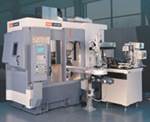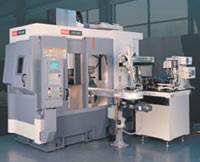Cleaning Molds: Part I
Cleaning a mold is a critical part of the repair process, but many myths must be dispelled.
More time in mold repair is spent cleaning mold plates and tooling than in any of the other stages (disassembly, troubleshooting or assembly) combined, for two reasons: (1) clean plates and tooling are critical to maximize mold life and reliability and to produce a high-quality product; and (2) most molds are cleaned completely by hand.
New (and old) cleaning equipment and mold design technology that could be used to drastically cut cleaning hours and tooling damage is underused. The next articles in this series will discuss cleaning attitudes, methods and myths, including how to justify the cost of buying new cleaning equipment. We will also cover steel and plating improvements that will extend run cycles and clean molds easier and more quickly.
The Cleaning Culture
Mold cleaning is a process where major maintenance bottlenecks often occur because molds are pulled faster than they can be cleaned and made production-ready. I have visited plants where molds waiting to be cleaned line hallways and toolrooms, taking up valuable bench space.
Many times, in order to meet production demands, molds get reset dirty or the cleaning process is rushed, which subjects tooling to more damage through hurried handling. The question is asked, "Can we run it the way it is, or does it really need to be cleaned?" In companies where firefighting is the accepted culture, the mold will be reset and started; if all the parts come out clean, it runs. Once this happens a few times, management comes to assume that molds need to be cleaned only when the residue level is bad enough to migrate out onto the part, or until the mold locks (galls) up.
Some shops handle cleaning chores by enlisting non-skilled employees or toolroom apprentices to wash tooling and plates as quickly as the repair technician can take them apart. This practice works, unless the product has critical flash, dimensional or aesthetic specifications, or the mold has a history of maintenance, reliability or quality issues. It is difficult for the repair technician to accurate troubleshoot mold and part defects when all the track marks are washed off from the tooling and plates.
Standardize
Systemizing mold maintenance is based on establishing consistency in repairs required (performance) and repairs performed (maintenance). Cleaning is another area where individual techniques (freelancing) greatly affect mold reliability, part quality and the tooling budget. To be cost-effective, mold cleaning must be performed:
- At specified cycle frequencies
- Using specific instructions for varying levels (in-press, wipe down, general, major)
- After troubleshooting mold and part defects
- After repairs have been made
- After new tooling has been engraved with position number and has been installed
Instructions on how (and how frequently) cleaning must be performed should be determined by visual inspection after a known number of cycles are run, looking for residue buildup in vented and non-vented areas of tooling, plating wear and track marks. Supervisors should ask mold technicians for their input on how many cycles molds can safely run. Observations concerning residue accumulation and wear should be documented to underscore the significance of accurate observations and to ensure mold cleaning is not taken for granted as a non-critical function, where expensive mold tooling is treated like rusted garden tools.
All molds should have in-press servicing procedures, including frequencies, and a maximum cycle count set that is strictly adhered to. A number of areas are critical to reliable production, including the internal grease level; the condition of gear racks, sliding cam blocks, internal pins and bushings, and other moving components; water line and bubbler contamination or blockage; manifold weepage; rust and corrosion from water leaks; or condensation. Excess grime can cause problems in many areas of a mold that won't be first flagged by residue leaching out onto the part.
Attitudes
Cleaning is unpopular with many employees who prefer the challenge of troubleshooting or machining. Cleaning is messy, sometimes monotonous, and can be a potential health risk. There can be prejudice in a company culture that associates the job of cleaning with a lack of talent. On the flip side, other repair techs live for the cleaning stage. It is an area where they can relax, crank up the radio and scrub tooling for hours, while passing managers are impressed with the technician's diligence on the job.
However, a top-shelf toolmaker is usually not assigned to clean molds. This responsibility is often placed in the hands of a technician who is not familiar with the mold-specific defects and function, or the critical seal areas of the tooling. Doing so will often create continuous mold performance issues and inflate the tooling budget through the addition of dings, burrs, rounded-over edges, premature plating or steel removal and mixed up tooling. These problems, in turn, can ignite the fires that are fought in a reactive system that does not monitor or count defects to correct root causes.
How Clean Is Clean Enough?
The type of fouling (chemical make-up and physical characteristics) or residue the molding process leaves behind on your tooling will help determine your cleaning requirements.
Many resins contain stabilizers, fillers or release agents that leave residue in the form of grease, light oil, yellow waxy film or rust and white-colored dust. Some resins, such as PVC, create hydrogen chloride gases that corrode many types of mold steels. Other resins with flame-retardants contain antioxidants, which will plate-out and over time attack steel.
Some color pigments stain steels that build up and can be difficult to remove. Even plain water will do harm if left on untreated mold surfaces too long.
Molds should only be cleaned as much as necessary to carry them through a predetermined number of cycles. Scrubbing or blasting all oxidation stains and discoloration off non-critical tooling and plates every time a mold comes out opens pores and slowly erodes the surface and edges, requiring replacement long before it should. Unfortunately, it only takes minutes of run time to reacquire the initial staining. This was proven to me by observing molds that were thoroughly cleaned, run for a couple of hours, then pulled for a change-over. In areas where a lot of time had been spent scrubbing, some surface stains reappeared.
Many molds have self-cleaning vent passages, which means highly polished in toolmaker terms. Cleaning, then polishing vents to an SPI #A3 finish or better prevents residue from adhering to a rougher surface that milling or grinding leaves, allowing residue to be blown into the larger vent dump area. This keeps vents cleaner for a longer period of time and also allows potential cycle increases between cleanings.
Over-cleaning results from abrasive hands-on methods using scrubbing pads that are too coarse, emery cloth or sandpaper, stones, and brushes with bristles made of assorted compositions such as nylon, brass and steel.
High-pressure blasting units that use media like hard plastics, glass beads, walnut shells and aluminum also can abrade the surface of molds. If used frequently, or in an unregulated maintenance environment, these abrasive methods slowly pound the surface of steel like microscopic chisels, causing residue to adhere to the now-porous surface. Overly abrasive cleaning methods are the primary reason molds experience quick residue build-up, excess wear, premature tooling failure and flash defects.
Finding the right cleaning equipment required for your molds and processes, combined with documented methods and frequencies, can reduce repair hours by as much as 50 percent and reduce tooling wear. The ROI on cleaning equipment is less than 60 days in many cases. Typically, the best method will involve two or three different technologies designed to clean specific types of residue.
Related Content
How to Overcome Complex Mold Texturing Problems
Key benefits when considering laser technology for mold texturing and repair.
Read MoreLaser Welding Versus Micro Welding
The latest battle in finely detailed restoration/repair of mold materials.
Read MoreWhat Is Scientific Maintenance? Part 1
Part one of this three-part series explains how to create a scientific maintenance plan based on a toolroom’s current data collection and usage.
Read MorePrecision Meets Innovation at IMTS 2024
After attending IMTS, it's clear that the integration of advanced technologies is ready to enhance precision, efficiency and automation in mold manufacturing processes. It’s a massive event, so here’s a glimpse of what the MMT team experienced firsthand.
Read MoreRead Next
Cleaning Molds: Part III
Ultrasonic immersion cleaning is a non-abrasive, user-friendly method that has the greatest impact on reducing cleaning time, improving mold cleaning consistency and reducing tooling damage.
Read MoreReasons to Use Fiber Lasers for Mold Cleaning
Fiber lasers offer a simplicity, speed, control and portability, minimizing mold cleaning risks.
Read More


















